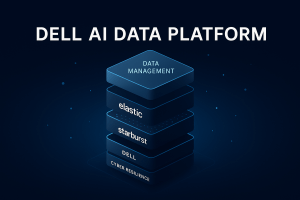On this episode of This Week in Tech, I’m joined by fellow analyst and member of the theCUBE Collective community, Jo Peterson, along with Google Cloud’s Bobby Allen and Brandon Royal, for a conversation unpacking the new Google Hugging Face partnership, which is designed to accelerate generative AI and ML development.
Bobby and Brandon shared their insights on the benefits the Google Cloud Hugging Face alliance brings to developers and why it’s an important piece of news for the community.
Watch the full episode of This Week in Tech where here and stream it wherever you get your podcasts:
Google Cloud Hugging Face Partnership: All About Developers
As some backstory, a few weeks ago, in early February, Google Cloud and Hugging Face announced a partnership, and one that’s been touted as a giant win for the developer community. This partnership gives developers the ability to train and operate Hugging Face models on Google Cloud infrastructure, which should go a long way toward accelerating Generative AI and ML development.
This new partnership will let developers build, train, and deploy AI models without needing to pay for a Google Cloud subscription. Outside developers using the Hugging Face platform will have cost-effective access to Google’s tensor processing units (TPU) and GPU supercomputers, which will include thousands of NVIDIA’s in-demand and export-restricted H100s.
A Look at the Hugging Face Collaborative AI Repository
In case you’re not yet familiar with Hugging Face, the company bills itself as “The AI Community building the future.” It is one of the more popular AI repositories, a platform for storing, viewing, sharing, and showcasing machine learning models, datasets, and related work. The goal of Hugging Face is to make Neural Language Models (NLMs) accessible to anyone building applications powered by machine learning.
Hugging Face provides these services:
- Hosts open-source pre-trained machine learning models
- Provides users with easy access to these models through various environments (for example, Google Colab or a Python virtual environment)
- Features tools for adjusting machine-learning models
- Has an API that offers a user-friendly interface for performing various machine-learning tasks
- Features community spaces for collaborating, sharing, and showcasing work
The core of Hugging Face is the Transformers model library, dataset library, and pipelines. Hugging Face has a library of over 495,000 models grouped into data types called modalities. Some of the tasks that customers can perform are object detection, question answering, summarization, text generation, translation and text to speech.
This is key, as having a toolset like this in a customer’s back pocket allows them to speed time to market and leapfrog the competition.
Why the Google Cloud Hugging Face Partnership is Compelling
Why is the Google Cloud Hugging Face partnership compelling? In short, what Google Cloud and Hugging Face are doing is creating a playground for developers that will allow them to cost-effectively roll up their sleeves and build, train, and deploy AI models, speeding the ability to innovate and bringing the power of the Hugging Face open source community to GCP.
Google Cloud customers will be able to deploy Hugging Face models within Google Kubernetes Engine (GKE) and Vertex AI, the company’s ML platform offering Gemini, a multimodal platform from Google DeepMind. It’s expected that Vertex AI and GKE will be available on the Hugging Face platform during the first half of 2024.
As part of its new partnership with Google Cloud, Hugging Face will roll out an integration for the Vertex AI product suite. The suite includes AI development tools and more than 130 prepackaged foundation models.
A similar integration will roll out for Google Kubernetes Engine. Developers can use the service to run AI workloads, such as open models from Hugging Face, in containers. Brandon, who has deep roots in Kubernetes, shared thoughts on why this integration to Google Kubernetes Engine matters, especially for developers who are less involved in infrastructure.
If you enjoyed this episode of theCUBE Research’s This Week in Tech, be sure and take a minute to hit the subscribe button over there on your right and also hop over and subscribe to our YouTube channel so that you don’t miss an episode.
Disclosure: theCUBE Research is a research and advisory services firm that engages or has engaged in research, analysis, and advisory services with many technology companies, which can include those mentioned in this article. The author holds no equity positions with any company mentioned in this article. Analysis and opinions expressed herein are specific to the analyst individually, and data and other information that might have been provided for validation, not those of theCUBE Research or SiliconANGLE Media as a whole.
Other recent episodes of This Week in Tech:
Cisco Live 2024 Amsterdam Announcements: Delivering on Promises Made in 2023
Cohesity-Veritas Merger, F5 AppWorld Recap, and Security Vendors in the AI Age



